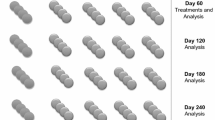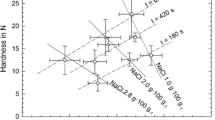Abstract
Mahon cheeses were brined in the presence of an ultrasonic field and ripened during 75 days at 12 °C and 85% RH. Secondary proteolysis (water-soluble N, non-protein N, and free amino acids) was measured and compared to that obtained for cheeses conventionally brined. There were no differences in water-soluble and non-protein N attributable to the brining treatment. However, cheeses acoustically brined exhibited higher concentrations of free amino acids. The release of total free amino acids was more pronounced during the first 15 days of ripening for both types of brining treatments. The changes in proteolysis (free amino acids) during cheese ripening caused by acoustic-assisted brining are indicative of a higher extent of proteolysis and may also improve cheese flavor.
Similar content being viewed by others
Author information
Authors and Affiliations
Additional information
Received: 13 March 2000
Rights and permissions
About this article
Cite this article
Sánchez, E., Simal, S., Femenia, A. et al. Proteolysis of Mahon cheese as affected by acoustic-assisted brining. Eur Food Res Technol 212, 147–152 (2001). https://doi.org/10.1007/s002170000263
Issue Date:
DOI: https://doi.org/10.1007/s002170000263




